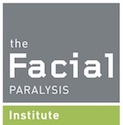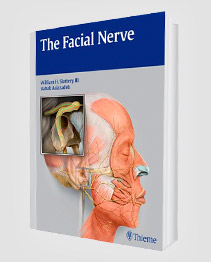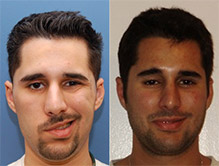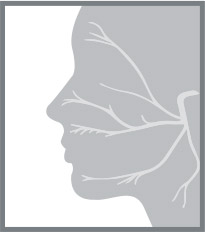Facial nerve paralysis can really mess with a person’s life, making it tough to do simple things like smile or blink. When this happens because the nerve is squeezed, decompression surgery might be an option. This article will walk you through the different ways doctors can relieve that pressure, helping folks get some of their facial movement back. We’ll look at the various surgical choices available for Facial Nerve Paralysis: Decompression Surgical Options.
Understanding Facial Nerve Paralysis
The facial nerve is this complicated thing. It’s not just one wire; it’s more like a whole cable system controlling all sorts of facial movements. Think smiling, frowning, blinking – all that’s the facial nerve’s job. It winds its way through some tight spaces in your skull, which, as you can imagine, can sometimes lead to problems. Understanding the facial nerve’s path is key to figuring out what’s gone wrong when paralysis hits.
Manifestations of Facial Nerve Impairment
When the facial nerve goes haywire, you’ll notice it. The most obvious sign is weakness or drooping on one side of your face. But it’s not just about looks. You might have trouble closing your eye, which can lead to dryness and irritation. Eating and drinking can become a messy affair, and even your sense of taste might get wonky. It’s a real pain, and it messes with everyday life.
Here’s a quick rundown of common symptoms:
- Facial drooping
- Difficulty with facial expressions
- Changes in taste
- Dry eye or excessive tearing
The Imperative for Timely Intervention
Time is of the essence with facial nerve paralysis. The sooner you get it checked out, the better the chances of a good outcome. If the nerve is compressed or inflamed, early treatment can prevent permanent damage. Think of it like this: the longer the nerve is under pressure, the harder it is for it to bounce back. So, don’t wait – get it looked at! Delaying treatment for facial paralysis symptoms can lead to long-term issues.
The Philosophy of Decompression Surgery

Alleviating Neural Compression
It all boils down to pressure. The facial nerve is responsible for all your expressions, and can get squeezed. Think of it like a kink in a garden hose – nothing flows right. Decompression surgery aims to release that pressure, giving the nerve some breathing room. The goal is to remove whatever’s causing the compression, whether it’s bone, swelling, or something else. It’s like giving the nerve a spa day, only with drills and scalpels.
Restoring Neurological Function
The surgery relieves pressure, allowing the nerve to heal and resume functioning. However, nerves are slow healers, and recovery depends on the body and luck. Restoring neurological function requires time and effort, similar to trying to revive a plant.
Optimizing Patient Outcomes
Decompression surgery aims to restore patients to normalcy, improving their quality of life. It involves post-surgery care, rehab, follow-up appointments, and personal commitment to recovery. While not a guaranteed solution, it can be a significant step towards recovery. Realistic expectations and collaboration with the medical team are crucial for optimal outcomes.
Transmastoid Decompression: A Targeted Approach
When facial nerve issues stem from problems in the mastoid or tympanic areas, you might be a candidate for transmastoid decompression. It’s like going straight to the source of the problem. This method focuses on carefully freeing the nerve where it passes through the mastoid bone.
Indications for Mastoid Segment Involvement
Mastoid segment involvement is considered appropriate when imaging indicates facial nerve compression or damage within the segment, such as from infection, trauma, or tumor. A thorough exam and scan review by a doctor determines the appropriate treatment.
Precision in Surgical Landmarks
Think of surgery like navigating a complex map. In transmastoid decompression, certain landmarks are critical. The digastric ridge, for example, is a key bony structure that helps guide the surgeon to the facial nerve. The fossa incudis and the lateral semicircular canal also serve as important reference points. These landmarks help ensure that the decompression is precise and minimizes the risk of injury to surrounding structures. It’s all about knowing exactly where you are and where you need to go.
Enhancing Decompression Through Grafting
Grafting is a surgical technique that creates more space around a nerve, especially when it has been significantly compressed or damaged. It acts as a spacer, preventing the surrounding bone from re-pressing the nerve, leading to improved long-term outcomes and nerve function.
Here’s a quick look at some common grafting materials:
- Bone grafts (taken from elsewhere in your body or from a donor)
- Cartilage grafts
- Synthetic materials
Ultimately, the goal is to give the facial nerve the best possible chance to recover and function properly. The choice of grafting material depends on the specific situation and the surgeon’s preference. It’s all part of tailoring the procedure to your individual needs.
Potential Complications and Risk Mitigation
After facial nerve decompression, you might experience some sensory changes. It’s not uncommon to have numbness or altered sensation around the ear or face. These issues are usually temporary, but it’s important to monitor them. We’ll keep a close eye on any changes and manage them with medication or therapy as needed. treatments for facial nerve damage at the Facial Paralysis Institute can help.
Minimizing Hemorrhagic Risks
Bleeding is a risk with any surgery, and facial nerve decompression is no exception. We take several steps to minimize this risk, including careful surgical technique and meticulous attention to detail.
- Pre-operative assessment of bleeding risks
- Intraoperative monitoring of blood pressure
- Post-operative observation for signs of bleeding
We use advanced imaging to plan the surgery and avoid major blood vessels. If bleeding does occur, we have protocols in place to manage it quickly and effectively.
Safeguarding Adjacent Cranial Nerves
The facial nerve is surrounded by other important cranial nerves. Protecting these nerves is a top priority during surgery. Injury to these nerves can lead to problems with hearing, balance, or other functions. To prevent this, we use:
- Precise surgical techniques
- Facial nerve monitoring
- Detailed knowledge of the anatomy
We also use specialized instruments to minimize the risk of injury. It’s all about being careful and precise to protect your facial nerve decompression.
Post-Operative Care and Recovery Trajectory

After undergoing facial nerve decompression, the journey to recovery is a marathon, not a sprint. It demands patience, diligence, and a collaborative spirit between you and your medical team. The immediate post-operative period focuses on protecting the surgical site and managing any initial discomfort. As you progress, the emphasis shifts towards facilitating nerve regeneration and regaining facial function.
Facilitating Neural Regeneration
Neural regeneration is a slow process. It can take several months, even years, to see the full extent of recovery. You’ll likely be prescribed medications to aid nerve function and reduce inflammation. Physical therapy plays a big role here. A therapist will guide you through specific exercises designed to stimulate the facial muscles and retrain them to move correctly.
Ensuring Ocular Protection
Protecting your eye on the affected side is critical, especially if you have difficulty closing your eyelid.
Here’s what you can expect:
- Artificial tears: Use them frequently to keep your eye lubricated.
- Lubricating ointment: Apply this at night to prevent dryness while you sleep.
- Eyelid taping: Your doctor might recommend taping your eyelid shut at night.
- Consideration of surgical options: In some cases, procedures like placing a small weight in the upper eyelid or a tarsorrhaphy (partially sewing the eyelids together) may be necessary to provide long-term protection.
Structured Follow-Up Protocols
Regular follow-up appointments with your surgeon are crucial for monitoring progress, adjusting treatment plans, and addressing concerns. These may include physical examinations, photography, and electrophysiological testing. Post-surgery, follow-ups may be spaced out to monitor progress. Remember that everyone’s recovery is different, so stay positive and celebrate small victories. After the procedure, take care of yourself and visit the website for helpful tips and information.
Conclusion
Facial nerve decompression surgery is a significant procedure used to address issues caused by squeezed facial nerves. Doctors use various approaches, such as transmastoid, middle fossa, or translabyrinthine, depending on the nerve’s trouble spots. While surgery can lead to potential complications like hearing issues or bleeding, it can help improve facial function for some individuals. The decision to undergo the surgery depends on weighing the benefits against potential issues, which should be discussed with a doctor.
Request your consultation with Dr. Azizzadeh today
Call us at (310) 657-2203 to schedule an appointment.
Schedule a Consultation




